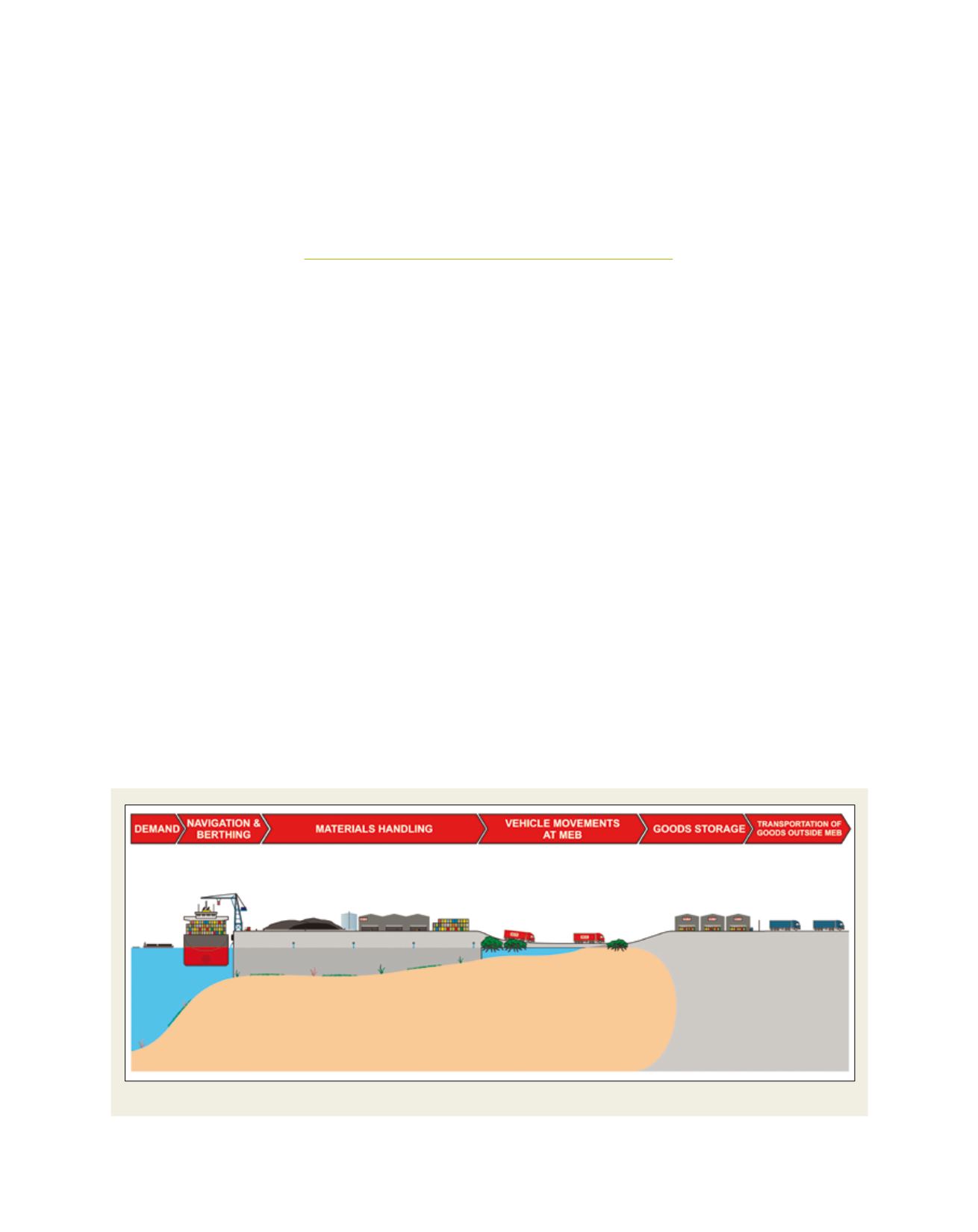

[
] 183
Building resilience to future climate change
in ports: Terminal Marítimo Muelles
el Bosque in Colombia
Jean-Christophe Amado and Richenda Connell, Acclimatise
P
orts are on the frontlines of climate change, by virtue of
their locations on coasts exposed to sea level rise and
storms or on rivers susceptible to flooding or droughts.
Weather impacts on ports have made headlines this past decade. In
2005, Hurricane Katrina’s seven-meter-high storm surge destroyedmost
of the infrastructure of Gulfport, the third busiest port in the US Gulf of
Mexico, knocking down container cranes, blowing apart storage sheds
and pushing barges hundreds of feet inland. In 2010, after repairs worth
over US$250 million and new investments, the port still only operated
at 80 per cent of its pre-Katrina capacity.
1
Meanwhile, Hurricane Ike
caused US$2.4 billion of damage to Texas ports and waterways. To a
certain degree, these storms indicate the scale of the future costs that
could be suffered because of more extreme weather.
A recent Bloomberg article singled out 20 port cities worldwide for
the high risks they face due to climate change, putting assets worth
billions of dollars at risk.
2
A 2011 Stanford University survey of port
authorities revealed that climate change, together with rising sea
levels, ranks high on their list of concerns, though few have concrete
plans to adapt to this new reality.
Beyond concerns about greenhouse gas emissions, climate
change risk for ports worldwide is multifaceted. It does not stop
at increased risk of flooding or reduced navigability of
access channels, but also includes potential shifts in
shipping levels or patterns, and effects on environmen-
tal performance. Such risks can bear significant costs
for port operators if nothing is done to avoid impacts
and reduce vulnerability.
A port’s reputation for reliability is key to its commer-
cial success, and as such ports that build resilience
against the expected impacts of climate change stand
to fare better than their competitors.
3
Recognizing the potential significance of climate
change to port performance, the International Financial
Corporation together with Terminal Marítimo Muelles
el Bosque (MEB), a large port in Cartagena, Colombia,
collaborated in a study to assess risks and opportunities
for MEB as well as for ports in general.
Led by the specialized climate risk management consul-
tancy Acclimatise, a group of international consultants
joined respected Colombian academics and experts in
an evaluation of financial impacts for the port based on a
detailed analysis of climate observations and climate change
projections. Also considered were the available measures
T
ransport
and
I
nfrastructure
Key port activities which can be affected by climate change
Source: International Finance Corporation
















